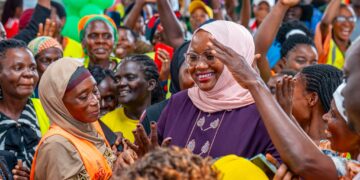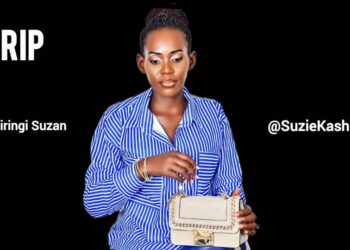The Ugandan social media space never gets cold as new slangs and phrases keep unfolding. Tusimbudde,Tokisusa, Tojja, Kwetega, Olemwa, etc are among many other phrases that have popped in.
“Osirike” is one that has taken on the trends and for every social media user, your auto correct must have captured that.
It doesn’t matter how hard one may try to ignore these trends, they will still come your way; through a WhatsApp status, a tweet, an Instagram story or even a Facebook post and you can’t disregard it.
“Osirike” is a Luganda word that literary means stay silent or mute. The phrase experienced a surge in popularity through funny memes and quotes in which it was frequently used.
Should brands check social media trends to find out what’s holding consumer interest and capitalize on that?
That’s a question that this article seeks to answer.
Joy Akatukunda (@akatukunda_) a digital marketer and online content creator shares that online trends such as “osilike” could have an advantage to a brand if used well and if a brand tactfully uses the trend to put out a certain message, they could get new eyes on their business.
“Personally I usually love brands that utilize these trends because it shows they are alert and are in the know of what’s going on on social media, which is the most effective digital channel,” she said.
She adds that social media gives a brand a chance to speak to people as humans, show their personality and also share relatable experiences as they creatively offer solutions to their problems.
Cautiously, Akatukunda added that brands have to be careful. Not all trends are worth hijacking as some words or phrases may be controversial/may not align to the brand values, persona and tone of voice.
“It’s good to analyze how you fit in. If that’s not how you envision your brand interacting with potential customers then don’t jump on the trend. Your target market matters too. If the people mostly engaging under the trending hashtag or keyword aren’t part of your target market then you may get new eyes but they could never become actual customers,” Akatukunda cautions.
Faiza Fabz Salim (@Faizafabz) a digital influencer and journalist at Vision Group says that online trends generate conversation and engagement from social media users which brands use to create traffic by simply jumping onto those trends smartly making sure their products have visibility.
“Brands often times also create campaigns to sell or promote products using online trends. They will use catchy statements from the trends and ride on that to create a voice or image of the campaign,” Faiza said.
Not so different from Akatukunda, Faiza added that Keeping up with trends shows that a brand is versatile, dynamic and fast adapting. This attracts more users or potential clients towards a brand.
“Trends also create a leveraging opportunity for brands e.g the Mzee Jemba trend had brands offering to donate or help him but smartly making sure their products are visible through either direct endorsement by Mzee Jemba or product placement,” she added.
It should also be noted that there’s no limit to how long a topic stays popular, though trending topics tend to have a shelf-life of one day to one week.
How are trending topics determined?
Trending topics are determined by algorithms created by the site on which the topic appears. Most platforms tailor the topics shown based on the user accessing the site, taking into account location, previous likes or searches and who the user follows.
On Twitter a keyword on the trends list shows all tweets containing that keyword when someone clicks on it under the trends.
What does a trending topic look like?
Trending topics often come in the form of hashtags, but they can also be simple keywords that have been frequently used on social media.
They evolve around popular occurrences such as current events, celebrity statements, TV premiers, social concerns, breaking news and viral content.







































